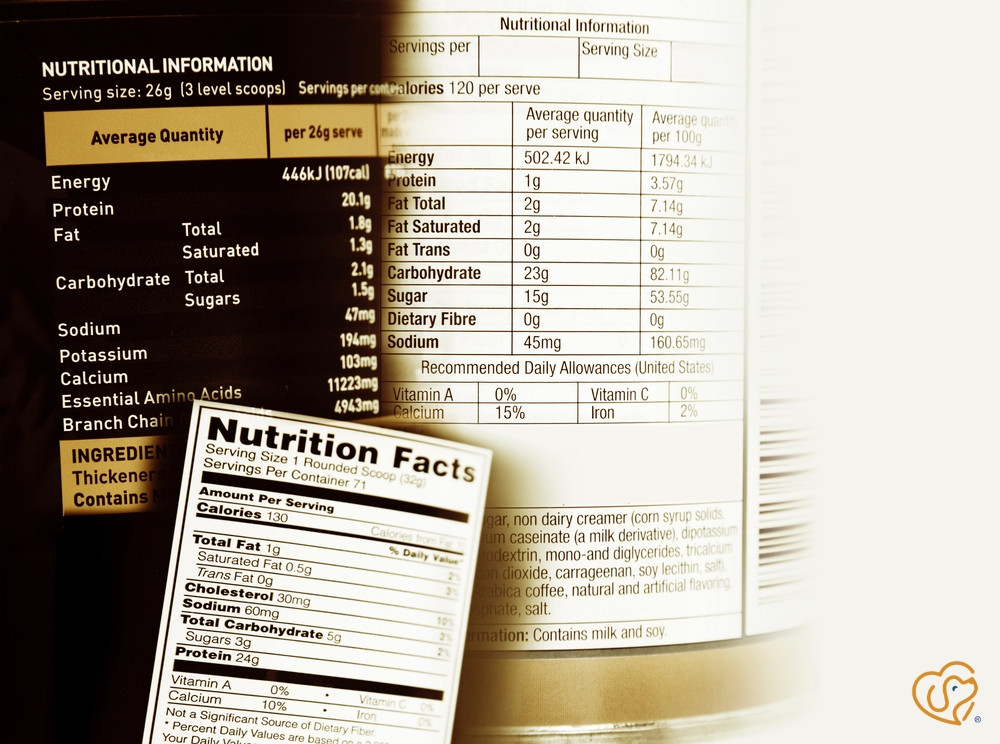
Ingredient labels, for humans and dogs alike, can be both confusing and alarming at the same time. If you aren’t familiar with sorting through these labels, it’s quite easy to become lost and frustrated in the process. To make things easier for you and your furry friend, we've created this list of tips to help you make sense of the madness.
Tip 1: Focus On The Quality Of The First Five Ingredients.
Generally speaking, ingredients are listed in order by volume. The higher up an item is on the list, the more of it there is in the food. The first 5 ingredients typically make up the majority of the food. Given that our pups are carnivores, it would make sense that the first two ingredients are meat, right? Secondly, you should avoid foods that use more than two legume ingredients in that list of five. This will ensure most of the protein comes from meat. Examples of legumes are beans, chickpeas, soybeans and peanuts.
Tip 2: Look For Ingredients You Can Easily Pronounce.
When it comes to the ingredient list, a good rule of thumb is a follows; if you can’t easily pronounce the first four ingredients, chances are pretty good that you should choose something else. These ingredients are usually food additives that indicate a highly processed food. The same rule holds true in our human diets as well!
Tip 3: Not All Proteins Are Created Equal.
While protein is essential for a healthy pup, not all sources of protein are created equal. To clarify, just because the crude protein percentage is high, doesn’t mean you’re getting high quality protein. It’s important to choose a food that’s high in meat protein and low in plant protein and carbohydrates.
Tip 4: What Exactly Do The Descriptive And Possibly Deceptive Terms Mean?
With all of the new trends in dog food labeling, is "organic" the same as "natural?" Is "grain-free a good thing?" What are "new proteins" and does my dog need them? What does AAFCO stand for? Let's take this one step at a time.
Organic
There are NO official regulations for the labeling term "organic" for pet foods. Dog foods that claim to be organic must meet the same standards for labeling as organic human food labeling. These standards are determined by the USDA's National Organic Program and must follow a few basic rules.
- No artificial preservatives, coloring or flavoring.
- No antibiotics or growth hormones in meat and meat by-products
- No or little fillers
"Natural" is not the same as "organic"
For the most part, natural can be interpreted as lacking of artificial colors, flavors and preservatives.
"Grain-free" is the new, hot trend
There has been very little veterinary science to support the advantages of a grain-free dog diet as compared to diets with grain. Grain-free diets are being reviewed by the FDA because of concerns of a possible link to Dilated Cardiomyopathy (DCM) a type of heart disease in certain breeds and dogs.
"New proteins"
Are actually nothing new. These proteins are from alternative sources like, duck, bison and rabbit. These "new proteins" could be beneficial for dogs that have difficulty eating more common sources of protein such as chicken or beef. Sure is catchy though.
Finally, Lets look at the human-grade dog food standards!
Defined as a food that is legally edible and approved as nourishment for humans. Human-grade food is highly regulated by the FDA and the USDA. However, according to AAFCO (The Association of American Feed Control Officials), for a product to be human edible, all ingredients in the product must be human edible and the product must be packed and held in accordance with federal regulations in 21 CFR 110, Current Good Manufacturing Practice in Manufacturing, Packing, or Holding Human Food.
Tip 5: What is (AAFCO) And Do They Have My Back?
The Association of American Feed Control Officials does not regulate or inspect anything. They are a group whose members are government agencies representing the 50 states, Canada, and the federal government (US Food and Drug Administration, Center of Veterinary Medicine; FDA CVM). These three teams work together cooperatively in many areas that support the recognition of ingredients and language found in state law.
The Breakdown,
When read correctly, pet food labels can provide important information for optimizing your pet’s health and overall well being. Owners who are educated about the myths and misconceptions of dog foods and their labels have a leg up when feeding their furry family member a healthy and balanced meal. If you have questions about our labels, please reach out to us. Our promise to you has always been, complete and honest transparency in everything that we do!
